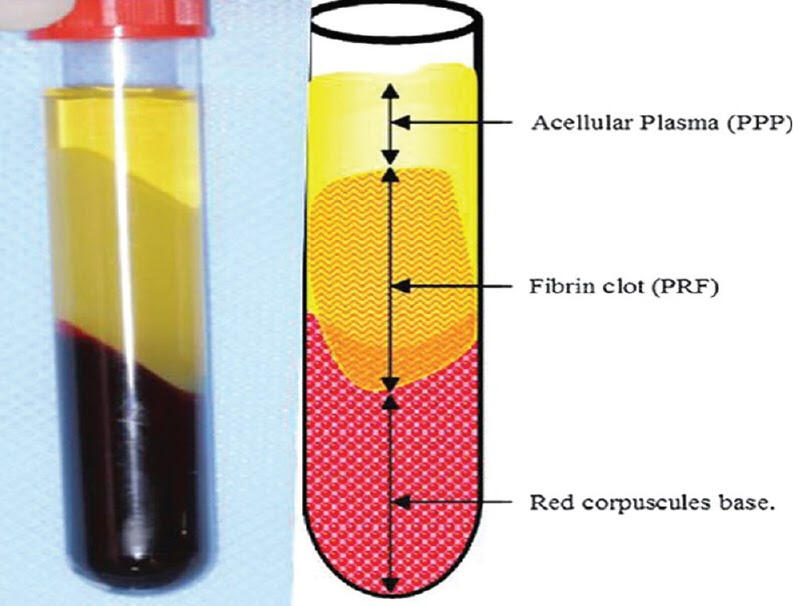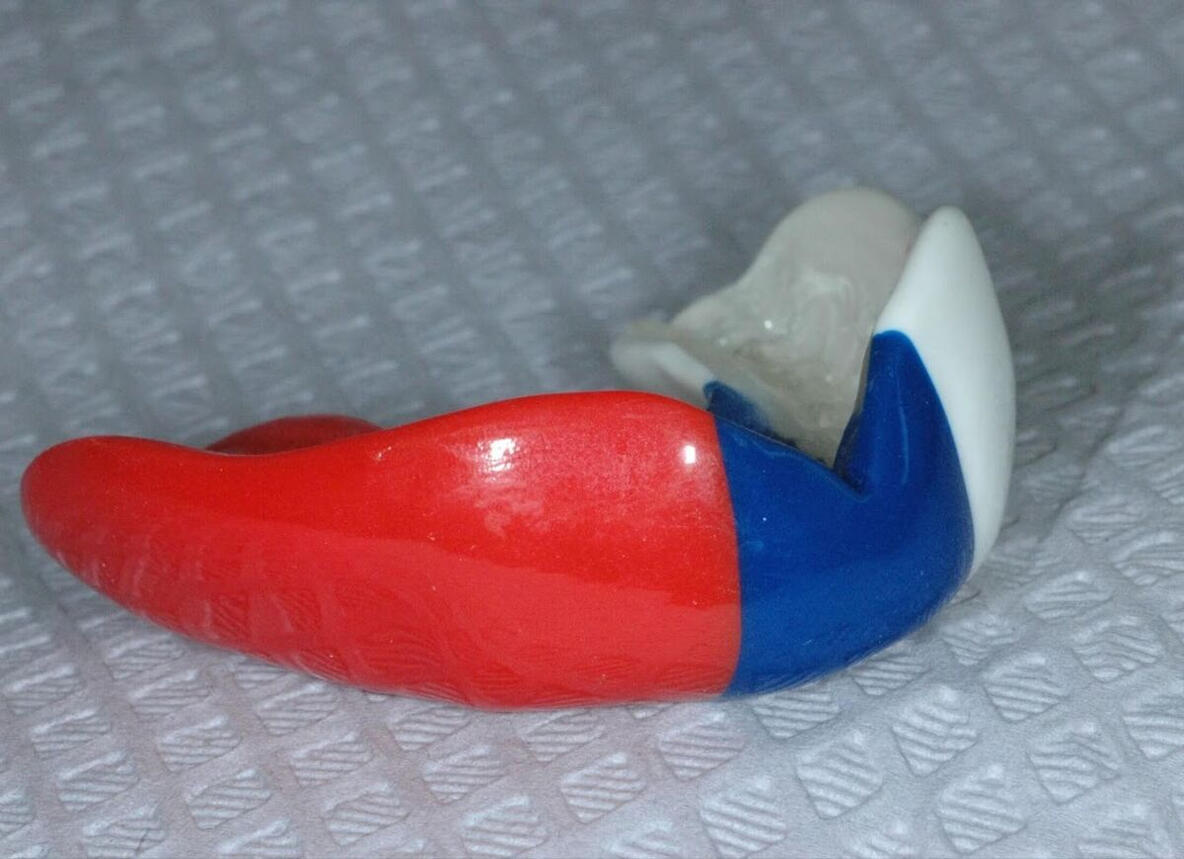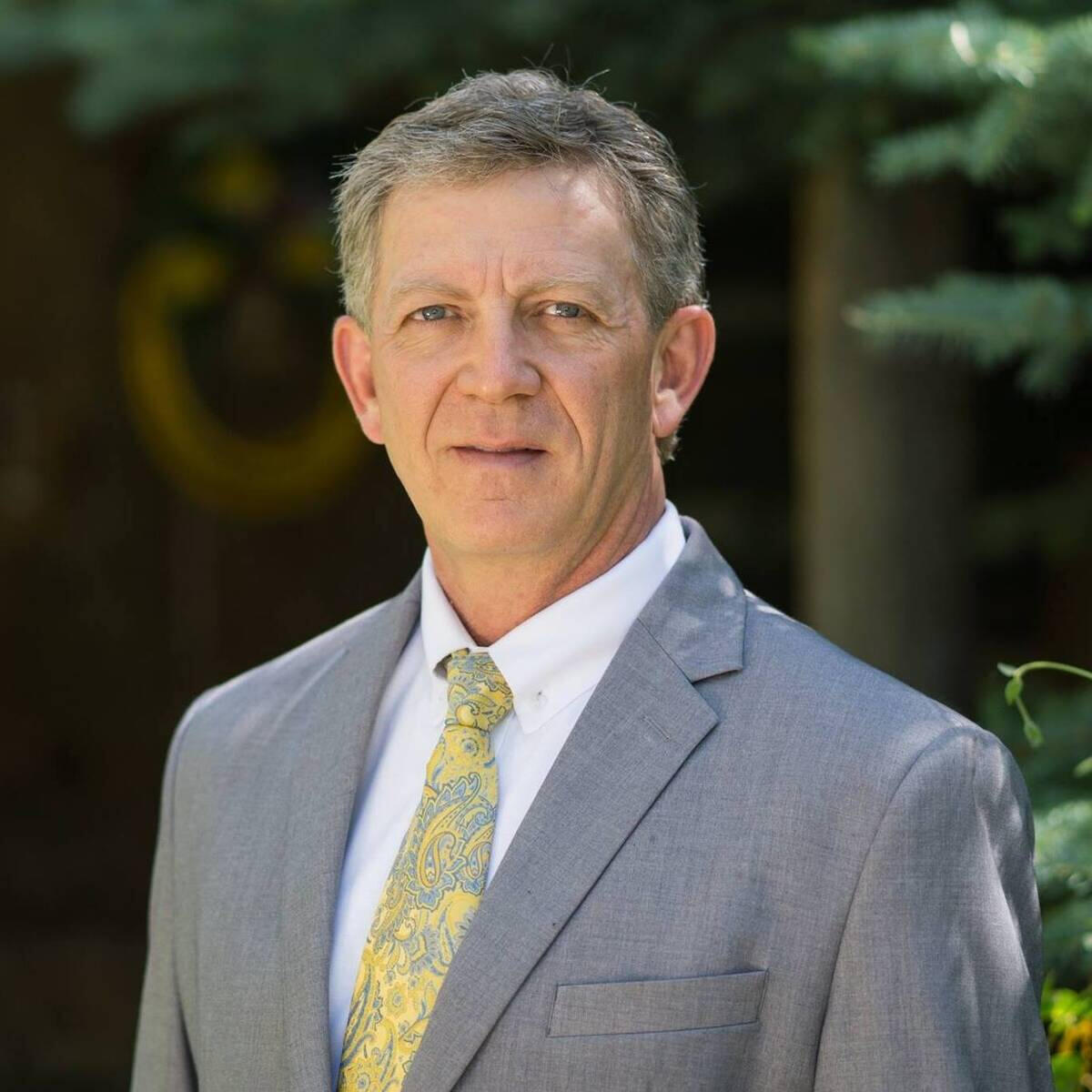Rod Maxfield, DDS
(801) 785-2631
Rod Maxfield, DDS
Dentistry Making a Difference!
Contact
Patients
First Visit
What to Bring
A current, complete list of your medications
Your insurance information (if you do not have insurance, or have questions, visit our Insurance Page)
Any specific questions you may have
What to Expect
A cleaning
A full mouth series of X-Rays
A comprehensive exam
A detailed discussion about your dental needs and options
Additional
Please alert our office if you have a medical condition that may be of concern prior to dental care
A parent or guardian must accompany all patients under 18
Financial
No Insurance? No Problem!
Every year hundreds of patients choose our Discount Dental Services (DDS) plan over other dental insurances, because it’s simply better. Ask us about our DDS plan!
Insurance
No Insurance? No Problem!
Every year hundreds of patients choose our Discount Dental Services (DDS) plan over other dental insurances, because it’s simply better.
Ask us about our DDS plan!
Contracted Providers
Aetna
*Delta Dental PPO (existing patients only)
*Delta Dental Premiere (existing patients only)
DMBA
Guardian
MetLife
PEHP
Regence Blue Cross Blue Shield
*Select Health (existing patients only)
SunLife
United Healthcare
First Visit
Please call in advance if you have any questions or concerns regarding your initial visit. If you have insurance please bring that information with you or send it in advance. If you do not have insurance, please ask about our Discount Dental Services (DDS) plan.
Reimbursement
We make every effort to provide you with the finest care and the most convenient financial options. To accomplish this, we work hand-in-hand with you to maximize your insurance reimbursement for covered procedures. If you have any problems or questions, please ask our staff. They are well informed and up-to-date.Co-pay estimates and deductible amounts are due at the time of service.Most insurance companies will respond within four to six weeks. Please call us if your statement does not reflect your insurance payment within that time frame. Any remaining balance after your insurance has paid is your responsibility. Your prompt remittance is appreciated. We can make arrangements for a monthly payment plan, but this must be done prior to the actual procedure. Amounts unpaid at the time of service will incur a $2.00 per month billing fee.Please remember you are fully responsible for all fees charged by this office regardless of your insurance coverage.
Payment Options
Patients Without Insurance
No insurance? No Problem! Every year hundreds of patients choose our Discount Dental Services plan over other dental insurances, because it’s simply better. Ask us about our DDS plan!
Financing
If you would like to make payments, we offer 3rd party financing through Care Credit and Cherry. Click on their logos to prequalify.
Patients With Insurance
Co-pay estimates and deductible amounts are due at the time of service.Most insurance companies will respond within four to six weeks. Please call us if your statement does not reflect your insurance payment within that time frame. Any remaining balance after your insurance has paid is your responsibility. Your prompt remittance is appreciated. We can make arrangements for a monthly payment plan, but this must be done prior to the actual procedure. Amounts unpaid at the time of service will incur a $2.00 per month billing fee.Please remember you are fully responsible for all fees charged by this office regardless of your insurance coverage.
Post-Op Care
Crowns and Bridges
(Also Inlays and Onlays):
These restorations require two appointments: first to prep the tooth and place a temporary crown, and second to place the permanent crown.
TEMPORARY CROWNS AND BRIDGES (also inlays and onlays)
Do not chew anything until the numbness is gone.
It is normal for gums to be sore after a crown/bridge procedure. Mouth rinses such as Listerine or Scope may be helpful in the healing process. Use as directed.
Be sure to brush gently around the temporary crown/bridge each day.
Floss down between the opposing teeth, but pull the floss out the side instead of back up as this might pull off the temporary crown/bridge.
Avoid chewing on the temporary crown/bridge if possible until the permanent restoration is cemented.
Temporary crowns/bridges will usually not feel like your original teeth. This is normal for the contour, color and texture to be different.
If your temporary crown/bridge comes off, please call our office and bring the temporary crown with you so we can re-cement it. It is very important that your temporary crown/bridge stays on to avoid tooth movement.
If pain swelling, an uneven bite, or anything that you perceive to be abnormal occurs, contact our office immediately.
Denture Delivery
Adjusting to new dentures takes time. The gum tissue supporting the denture may develop sore spots. When this occurs, call for an appointment right away to have your dentures adjusted. Dentures often require a re-line to improve the fit and retention.
Dentures placed immediately after the extraction of remaining teeth act as large band-aids, helping the tissue heal. Immediate dentures will definitely require additional re-lines as the extraction sites heal and the gums reduce in size.
Dentures must be brushed twice daily to remove plaque and prevent tartar from accumulating. Be sure to take your dentures out at night to help the gums stay healthy. Store in a container or cup with water. All denture wearers must have regular check-ups.
Fillings
Avoid eating or chewing until numbness is completely gone
Hot, cold, and pressure sensitivity is normal after your appointment. The injection site may also be sore. Over the counter pain medications should handle any discomfort.
If temperature, pressure, bite, or any unexplained sensitivity persists, or gets worse, call our office immediately for an appointment.
Implants
Avoid the surgery site as much as possible. Avoid rinsing, toughing, or anything that might disturb the implant.
Some bleeding may occur. Use gauze to stop any bleeding by simply biting on the gauze for thirty minutes. If bleeding will not stop, call our office immediately.
Swelling is normal for any surgery. To reduce swelling, apply an ice pack on the outside of your face (where the surgery took place) for 20 minutes every hour.
Take prescribed antibiotics as directed to prevent infection. If pain medications are prescribed, take those as directed also.
Limit physical activity for 72 hours. If bleeding starts, discontinue activity and call our office immediately.
Drink plenty of fluids. A diet of soft foods is recommended for the first 72 hours. As the surgery site heals, regular eating habits may be resumed.
Good oral hygiene is critical for proper healing. Anti-microbial mouth rinses may be used twice daily. Carefully brush around the surgery site, and not directly on it until healing is complete.
Oral Surgery
Implants:
Avoid the surgery site as much as possible. Avoid rinsing, flossing, or anything that might disturb the implant. Scroll down to see General Guidelines for Oral Surgery.
Wisdom Teeth and Extractions:
You will be given gauze to bite on to help in clot formation. After approximately 30 minutes of biting on gauze, the extraction site should stop bleeding. If not, replace the gauze and bite down another 30 minutes. Minor bleeding or “oozing” during the first 24 hours is not uncommon.
for the next 72 hours: Do not rinse vigorously, do not brush near the extraction site, no sucking on straws, avoid smoking or drinking alcohol, avoid chewing near extraction site, limit physical activity.
If a blood clot is lost, a dry socket will usually develop 2-3 days following surgery and will become uncomfortable. Call our office if pain occurs.
General Guidelines for Oral Surgery:
Avoid physical activity for 72 hours.
Swelling is normal as the body heals itself. Ice pack should be placed on the outside of the face in the areas of surgery. Apply them 20 minutes per hour as needed. Ice packs are recommended for the first 36 hours, after which moist heat will aid in healing.
Pain should be controlled with prescription medication or over-the-counter medications. Avoid driving, alcohol, or working with machinery when on prescription narcotic pain medications.Keep your mouth clean. Brush gently around the teeth near the surgery site and rise softly as not to dislodge any clots. Avoid vigorous mouth rinsing or touching the surgical sites.
Antibiotics should be taken as prescribed to prevent infection.
If nausea or vomiting occurs, do not eat. Treat the nausea with traditional over-the-counter remedies.
Corners of the mouth can sometimes crack, requiring ointment. Sore throats and pain when swallowing are not uncommon and will dissipate with time.
Jaw soreness is common and will usually go away with time.
Sutures, if used, will usually dissolve on their own unless non-dissolving sutures were used. In this case they will be removed approximately one week from placement.
Oral Sedation
Patient must not drive for 24 hours after taking sedative drugs.
A responsible adult must stay with the patient until the effects of sedative drugs have worn off.
Patient must not operate heavy machinery or hazardous devices for 24 hours.
Patient must not use stairs without assistance. Have patient stay on ground floor during recover.
Patient must take plenty of fluids as soon as practical.
Patient must eat as soon as practical after numbness is gone.
Assist patient when walking, and be prepared to support all of their weight.
Patient should not be left alone with small children who need prenatal care for at least 24 hours.
Periodontal Therapy, Scaling and Root Planing (Deep Cleaning):
Avoid eating until numbness is gone
Avoid eating hard foods, such as tortilla chips, potato chips, popcorn or seeds for 48 hours
Resume your home care regimen immediately, brushing treated areas gently
If antibiotics have been placed directly into infected areas, discontinue use of Waterpik or other oral water flosser for 14 days. Continue brushing and flossing gently.
If prescribed, use medicated mouth rinse and/or antibiotics as directed.
Ibuprophen (Advil/Motrin) or acetaminophen (Tylenol) work well for pain.
Do not smoke for at least 2-4 days as it can interfere with healing.
Sensitivity to hot/cold and/or sweets is normal and should gradually resolve itself within a few weeks with proper home care. Brushing 2-3 times daily with sensitivity reducing toothpaste or using fluoride rinse usually helps. Avoid “whitening” toothpaste as it may aggravate the treated areas.
Root Canal Treatment
During root canal treatment, the nerve, blood vessels and decay in your tooth are removed. Because the tooth loses its vascular supply, it quickly becomes brittle and subject to fracture. Because of this, a crown is highly recommended as soon as possible.
Discomfort and swelling of the affected site may occur for several days. Tenderness to chewing may also occur and you should chew on the other side of the mouth.
Antibiotics for infection and pain medications may be prescribed. Take them as directed.
Drinking alcohol and/or driving should be avoided while taking narcotic pain medication.
Sealants
It is normal for the bit to feel slightly off after sealing placement. There may also be a slight aftertaste immediately following application. Rinsing with water will help remove the unwanted taste.
Sealants may be chewed on right after placement
Maintain good oral hygiene.
Sealants can chip or wear out. The condition of the sealants are checked at each re-care visit.
Services
Oral Surgery
Bone Grafting

When a tooth is extracted, bone loss occurs rapidly. Up to 50% of the bone height and width will likely be lost within the first six months. Without intervention bone loss will continue. This makes it difficult or sometimes impossible to wear dentures, and can disqualify you as a candidate for implants. However, bone loss after an extraction can be prevented. If graft material is placed into the site soon after the tooth has been removed, little to no bone loss will occur.
Material
The graft material used in our office is a particulate collected from a cadaver. In some cases, we also use porcine bone particulate. Both types of graft materials are re-hydrated before placement, usually with the serum collected from the PRF. This helps your body to accept the graft since it recognizes the serum as its own cells. Finally the graft material is covered with a membrane which essentially acts as a lid to seal the particulate in while the site heals.
Implants
Implants are designed as a substitute for the root of a missing tooth. The crown that is attached to the implant looks and functions like a natural tooth.Dental implants are tiny titanium anchors, which are surgically placed into the jawbone. Small posts called “abutments” are then attached to the implant, and protrude through the gums. Abutments provide stable anchors for artificial replacement teeth.
Am I a Candidate?
Implants are a great treatment option, but they are not for everyone. If you think implants are the right choice for you then we will do a preliminary consultation, which includes taking a CT scan of your jaw. The CT scan shows the bone density and height, and exact location of the nerves. We will also go over your health history thoroughly to determine if there are any specific concerns that may be a factor in a successful implant placement.While Dr. Maxfield does place many implants, there are some cases that we will refer to a specialist. Your questions and concerns are important to us, so even if we refer you to a specialist, we will do everything we can to make sure your questions are answered!
Hygiene for Implants
Implants do not decay like natural teeth can, but it is possible to develop gum disease around an implant. So it is important to continue caring for implants the same way you would care for natural teeth: brush twice a day and floss nightly!
Why Implants?
Implants can help preserve facial structure by preventing bone deterioration which occurs when teeth are missing. Single implants are easier clean than some other restorations, and feel and function more like natural teeth.Implants can also provide extra stability for dentures. Implant-retained dentures fit more snugly and comfortably than regular dentures. For more about implant-retained dentures click here.In some cases it may be appropriate to use implants to support a bridge. For example if a patient is missing three teeth in a row, implants may be placed at either end of the gap. Then a bridge can be placed on the supporting implants. Implant-supported bridges are not removable.
Procedure
For most patients, dental implants involve three appointments: two surgical procedures and a separate visit to place the final crown.First, implants are placed into the jawbone. For four to five months following surgery, the implants are beneath the surface of the gums, gradually integrating with the jawbone.After the implant has integrated with the bone, the second phase begins. Dr. Maxfield will use a laser to uncover the implant and attach a small healing cap. We will take impressions of the exposed top of the implant and send them to the lab.It will take the lab two weeks to make the crown. At that point Dr. Maxfield will remove the healing cap and attach the abutment and crown to the implant.
PRF

For years now, Dr. Maxfield has had great success using platelet-rich fibrin (PRF) in regenerative procedures. Platelets and fibrin are components of blood which form bio-active clots to promote healing.We will draw a few vials of blood from your arm and spin them in a centrifuge to separate the blood components. At the top of the vial is a yellowish fluid; this is plasma. The bottom two-thirds of the vial holds a thick, viscous “slug” made up of fibrin and red blood cells.Once the vials have been through the centrifuge, the plasma serum is siphoned off into a syringe for later use. The “slug” is then removed from the vial and the red blood cells are trimmed away from the fibrin. The fibrin clot is then placed into a metal container and compressed. The compression of the fibrin flattens it out, into a membrane.

Once the fibrin has been flattened into a membrane, Dr. Maxfield will place it into an extraction site or over the top of a bone graft to enhance healing. Because the membrane is made from your body’s own cells, there is no chance of rejection.Once the procedure is finished, the plasma serum that was siphoned from the vials is injected into the surrounding tissues. The fibrin clot and serum essentially kick-start the healing process because your body recognizes the cells as its own.Benefits of PRF
Less inflammation and pain post-surgeryFaster healingNo risk of rejectionReduced risk of dry socket post-extraction
Benefits
Less inflammation and pain post-surgery
Faster healing
No risk of rejection
Reduced risk of dry socket post-extraction
Sedation
We know that dental visits can be distressing, but we do everything we can to make our patients as comfortable as possible! We have options available to those who may be particularly nervous or have extensive work that needs to be done.
Nitrous Oxide (Happy Gas)
Nitrous Oxide (also known as “happy gas” or “laughing gas”) is a sweet-smelling, non-irritating, colorless gas which you can breathe. When dispensed in low quantities, is not actually a form of sedation; rather it calms your nerves, making you more mellow. Nitrous oxide is completely safe, and we always administer oxygen along with it.Once the nitrous oxide has been shut off, the effects of the gas wear off within 10 minutes. Patients who use “laughing gas” can drive themselves home.
Sedation
In our office we use an oral sedation medication. It will make most people extremely tired, but does not always put people to sleep. The patient will not remember the procedure at all. The oral sedation medication we use is light enough that we can still communicate with the patient if needed.
PLEASE NOTE
Anyone being sedated for any procedure must have a designated driver. Patients who have been sedated can not operate a vehicle or other heavy machinery and should not be left alone. Sedation patients should have someone to assist them when walking and should avoid stairs.
Patient Instructions
Do NOT eat or drink anything after midnight the night before your appointment.
Do NOT self-medicate to “calm your nerves”
If you do self-medicate to relax you must disclose that information! Not telling the doctor about medications you have taken is dangerous!
Bring a list of any prescribed medications you are taking.
Have a driver who can pick you up afterward.
Have someone who can stay with you for the rest of the day.
Sedation patients should have assistance when walking around for the rest of the day.
Avoid stairs.
Do not schedule anything else for that day.
Chances are you will just want to sleep for the rest of the day!
Wisdom Teeth
Wisdom teeth are usually extracted between ages 16 to 19. At about age 16, we will take what is called a panoramic x-ray. This allows us to see the exact location of the wisdom teeth in relation to the rest of the oral anatomy. If the panoramic shows that the wisdom teeth are beginning to crowd the other teeth, or that their eruption is somehow hindered, then we will schedule an appointment to have them extracted. But some people have slower development than others, so it may be that waiting a few years to extract wisdom teeth is best.
Designated Driver
Anyone being sedated for any procedure must have a designated driver. Patients who have been sedated can not operate a vehicle or other heavy machinery and should not be left alone. Sedation patients should have someone to assist them when walking and should avoid stairs.
More Info
For more information on our sedation methods click here.
Sedation
Except in rare situations, we sedate patients for wisdom teeth extraction using oral sedation medication. The oral medication will make most people extremely tired, but does not always put people to sleep. The patient will not remember the procedure at all, but the medication is light enough that we can still communicate with the patient if needed.In our office we use nitrous oxide, or “laughing gas”, in conjunction with the oral sedation. This helps the patient to stay relaxed while in their state of semi-consciousness.
Patients
Root canals treat diseased and dying teeth. When the pulp (blood supply and nerve) at the center of the tooth becomes infected, the pulp is removed and the canal is thoroughly disinfected. The canal is then filled with gutta percha points coated in therapeutic medication. A temporary filling is used to seal the root canal until a permanent crown can be made.The pulp can become infected if cavities are left untreated and if old fillings or crowns break, allowing bacteria to leak underneath. Left too long, the infected pulp will die and the abscess will continue to worsen. Facial trauma can also cause the pulp to degenerate and die.Root canals may take up to two appointments to complete, and most of the time a crown will be placed a few weeks later.
Symptoms
Symptoms of a diseased or dying pulp can include:
Visible swelling
Sensitivity to temperature
Pain in the tooth itself and the surrounding gums
Visible trauma (i.e. a broken tooth)
If you experience any of these symptoms, call us!
Abscesses pose a severe health risk!
Waiting to get treatment means
that the problem will only get worse.
What Happens Next
Once the root canal is finished, that tooth will need a Crown. We will place a temporary crown on the tooth and take impressions to send to our lab. The final crown will be ready about two weeks later.
Preventative
A Big Deal!
When you think about it, everything necessary to maintain life goes past your teeth: from the air you breath to the food you eat! Keeping your mouth healthy is a big deal! That’s why we do thorough exams and discuss all your options with you.The most effective and valuable healthcare dollars you will ever spend will be on prevention!
Office Care
Besides having good hygiene habits, it is important to get a professional cleaning and exam every six months. This will typically include x-rays and intraoral photos. Most insurances will cover at least part of all your preventative care (check with your insurance to see how much it covers).In our office, a routine hygiene appointment includes:• A Thorough Cleaning• A Comprehensive Exam
• We want to make sure nothing is missed! We also want to help you understand any recommended treatment, so we make sure to discuss all of your options.• X-rays
• 4 bitewing x-rays once annually
• A full-mouth series or panoramic x-ray every 3-5 years• Optional Fluoride Varnish
• We highly recommend getting fluoride at least once per year for adults.
• We recommend more frequent fluoride for kids under 16, but it is still optional.• Patient Education
• We want you to leave our office feeling confident in your smile and your ability to maintain it! Please don’t hesitate to ask any questions you may have!
Fluoride
Fluoride is a mineral that is found in all natural water sources. When used correctly, fluoride is a very effective preventative tool. It remineralizes tooth enamel, creating stronger teeth and greater resistance to decay. Fluoride can be used topically or in the form of supplemental tablets. Supplements can be prescribed for kids ages six months to 16 years if they are high risk for decay or if their drinking water is too low in fluoride.
Topical Fluoride
In our office we use a topical fluoride varnish, which is painted directly onto the teeth. It feels sticky, but we recommend not brushing it off until you go to bed. Leaving the varnish on your teeth for a few hours produces better results than if it were quickly brushed off. After the fluoride varnish has been applied, do not eat or drink anything for 30 minutes.Our office applies fluoride varnish at every six month cleaning for kids up to 16 years old. We strongly recommend fluoride for adults at least once a year, but it is optional. We also suggest using a toothpaste that includes stannous fluoride, particularly if you have sensitive teeth.*Most insurances typically cover fluoride for kids up to 16 years old, but do not cover fluoride for adults. Each policy is different, so please check with your own insurance to verify that fluoride is covered.
Is Fluoride Safe?
Yes! When used as directed, fluoride is safe. Community water fluoridation programs are also safe. These programs adjust the fluoride content in the water supply to the recommended level for optimal dental health. According to the American Dental Association, the current recommended ratio is 0.7 parts fluoride per million parts water.
Systemic Fluoride
Systemic fluorides are those which are ingested. The most common systemic fluorides are from community water fluoridation and dietary supplements. Water fluoridation is an effective, safe, and inexpensive way to get the fluoride necessary for preventing decay. However, not everyone has access to a fluoridated water supply. For those who do not, fluoride is available in the form of dietary supplements. Because there are several factors to be considered when taking dietary fluoride supplements, they must be prescribed by a dentist.
Gum Disease
Fluoride is a mineral that is found in all natural water sources. When used correctly, fluoride is a very effective preventative tool. It remineralizes tooth enamel, creating stronger teeth and greater resistance to decay. Fluoride can be used topically or in the form of supplemental tablets. Supplements can be prescribed for kids ages six months to 16 years if they are high risk for decay or if their drinking water is too low in fluoride.
Stage 1: Gingivitis
Gingivitis is the earliest stage of gum disease. It is reversible, but only with the proper treatment. The symptoms of gingivitis include swollen and tender gums; gums that bleed while brushing, flossing, or sometimes when eating hard foods; and persistent bad breath.
Stage 2: Periodontitis
Periodontitis, or Stage 2 gum disease, is irreversible gum disease. At this point, the infection has compromised the supporting structures around the teeth. The attachment of the gums to the teeth will deteriorate, and gum tissues may begin to recede. Bone loss may also occur. The gums will be sensitive and bleed when brushing and flossing; hard foods may also cause discomfort and bleeding. Persistent bad breath is also a sign of periodontitis.
Stage 3: Advanced Periodontitis
Stage 3 of gum disease is Advanced Periodontitis; it has all of the same symptoms of gingivitis and periodontitis. At this point in gum disease, teeth can become mobile and shift–in some cases teeth may even need to be removed.
Preventing Gum Disease
In dentistry, prevention is key! Preventing gum disease is simply a matter of creating good hygiene habits. By getting back to basics and scheduling regular cleaning appointments, gum disease can be easily avoided!If you have not had a cleaning within the last 6 months please call us!
Hygiene Basics
Everyone knows the easy answers for good hygiene: brush, floss, visit your dentist. But do you know how often? Do you know the best techniques for brushing and flossing? Do you know how long to brush?Since we don’t see you every day, we want to make sure you know how to care for your oral health! Our hygienists and assistants do their best to help teach you the proper techniques for home dental care. Below are some tips we give our patients to make sure your mouth stays healthy.
Floss every day!
It’s easy to get cavities between your teeth: your toothbrush can’t clean in between. Flossing daily will keep the sides of your teeth clean and healthy.Recommended Technique: Floss in a “C” shape. Think about how you would shine your shoes. Would you only shine the tops? Of course not, you shine all the way around! So make sure you do the same with your floss. Go slow! Popping the floss in and out quickly will not do much to keep things clean.Pro Tip: When shopping, look for waxy floss that has multiple strands and a rougher texture. The rough texture will help catch more of the food and debris between your teeth than smooth floss!
Brush 2x a day!
The best times to brush are right after breakfast and just before bed. You should spend about two minutes brushing each time.Recommended Technique: Keep your brush at a 45 degree angle as you brush. Think about brushing your gums and be careful not to “saw” back and forth. Move your brush in small circles instead.Pro Tip: Set a timer for 1 minute and start brushing your bottom teeth. When it rings, you know it’s time to move to the upper teeth! Reset the timer and clean up top!
Brush your tongue
You tongue can collect a lot of bacteria! Make sure you brush your tongue each time you brush your teeth.Besides helping to keep your mouth clean, this can also minimize bad breath!
Use Mouthwash
Your teeth make up only a small percentage of your mouth. So it is important not to forget about the soft tissues! Mouthwash is not just for bad breath. Using mouthwash at least once a day will help keep those tissues clean and healthy.
Regularly See your Dentist
It is important to see your dentist twice a year for hygiene appointments. Even if you have great hygiene habits, it is likely that you still have some built up plaque. The only way to get it off is to see your dentist.Having regular check-ups means that any problems that may exist can be caught early. It is so much better to fix small problems than big problems! Dental problems don’t magically disappear or get cheaper. The longer your wait to fix a problem, the worse it will be — and more expensive!Pro Tip: When you come in for a cleaning, schedule your next appointment before you leave. Even if you end up needing to change it (because it’s hard to plan six months ahead!), you will be reminded that you are due for a cleaning!Have a question that wasn’t answered? Contact us! We’re happy to help!
Infection Control
Infection controls and precautions protect patients and staff alike. Our office follows procedures recommended by several federal agencies: the Occupational Safety & Health Administration (OSHA), the Environmental Protection Agency (EPA) and the Center for Disease Control (CDC).These measures include:
Gloves, protective eye wear, lab coats, and N95 masks
Sterilization of all equipment before every use
Single-use disposable materials
Disinfectant hand soap
Infection control training and rigorous attention to hand washing and PPE
Chemical disinfection of counter tops and surfaces
Whole room air and surface ozone disinfection
We sterilize all reusable equipment, including dental hand pieces. Ultrasonics and autoclaves are used for equipment sterilization.
Updated Sterilization Procedures
Under the threat of COVID-19, infection control policies and procedures have changed and will continue to evolve. With the added burden of additional materials, chemicals, labor, and especially time, we ask that you please be patient with us as we work to keep you safe.
Mouth Guards
Why Custom?

Custom mouth guards provide much stronger protection than generic ones from the local drugstore. The cheap “boil-and-bite” type mouth guards are inadequate for most people. With custom mouth guards, athletes can easily drink and talk while wearing them. They are available in a variety of colors, and can be made to look invisible.
Why Wear?
Some of our worst cases are people who were somehow hit in the face while not wearing a mouth guard. Without a mouth guard, teeth can be knocked out or broken. Mouth guards also provide some protection from possibly biting through your lips or cheeks.
When to Wear?
You should always wear a mouth guard while playing sports or during any physical activity. This includes everyone from football players, to wake boarders, to cheerleaders. Athletes who play full-contact sports of course run the risk of facial injury. It is not uncommon for a wake boarder to get hit in the face by their board during a wipe out. Cheerleaders are frequently elbowed or kicked in the face during stunts. Wearing a mouth guard will help prevent any serious oral injury.
Don't have a mouth guard?
Please call us! We're here to protect your smile!
Sleep Apnea
Adult
Do you snore at night? Do you wake up still feeling tired? If so, you might have sleep apnea. Sleep apnea is a common disorder that happens when your regular breathing is interrupted while you are asleep. There are two types of sleep apnea: Obstructive Sleep Apnea, and Central Sleep Apnea. Both forms are extremely serious, and should not be left untreated.If you think you may have sleep apnea, please call our office or your general care physician for a possible evaluation.
Who Can Get Sleep Apnea?
While men are more likely to develop sleep apnea, it can affect anyone at any age, including children. For more about sleep apnea in kids, please visit our Pediatric Sleep Apnea page.
Risk Factors & Side Effects
You may be at greater risk of sleep apnea if you:
are over 40 years old
are overweight
have large tonsils, a large tongue, and/or a small jaw
have a family history of sleep apnea
have a nasal obstruction related to allergies, sinus problems, or a deviated septum
If left untreated, sleep apnea can result in a wide variety of other health concerns, including, but not limited to:
high blood pressure
stroke
heart failure, irregular heartbeat and/or heart attack
diabetes
depression
worsening of ADHD
gastric reflux
Obstructive Sleep Apnea
Obstructive sleep apnea is what happens when the airflow is blocked while you are asleep. It is the more common of the two forms of sleep apnea, and usually occurs when the soft tissues at the back of the throat (the tongue for example) collapse.
Central Sleep Apnea
Central sleep apnea is not a blocked airway, but is actually a neurological problem. In this form of sleep apnea, the brain fails to signal the breathing muscles. This type of sleep apnea can be linked to heart failure, strokes, brain tumors, and infections.
Treatment
There are several treatment options for sleep apnea. These include:
Continuous Positive Air Pressure (CPAP)- A CPAP is a device which improves breathing while you sleep. The device supplies air through the nasal passages and the air pressure keeps the airway open while sleeping.
Oral Appliances- Certain oral devices can shift and support the jaw to prevent the airway from collapsing. Research shows that oral appliances can successfully prevent sleep apnea in some mild to moderate cases.
Adjusting Sleeping Habits- This may mean simply not sleeping on your back
Surgery- In some cases, upper airwaysurgery may be recommended when other treatment options are unsuccessful in eliminating the symptoms of sleep apnea. The procedure may be minimally invasive or more complex depending on the location and nature of the airway obstruction.
Pediatric
Pediatric sleep apnea is very similar to adult sleep apnea, however there are a few differences. Adults will usually experience daytime sleepiness, while children are more likely to have behavioral issues. Obesity is one major cause of adult sleep apnea and can play a role in pediatric sleep apnea as well. But the most common cause of pediatric sleep apnea is enlarged tonsils and adenoids.Early diagnosis and treatment are crucial to prevent complications that may affect children’s growth, cognitive development, and behavior. Pediatric sleep apnea should not be left untreated.
Risk Factors & Side Effects
Risk factors may include, but are not limited to:
Obesity
Down syndrome
Neuromuscular disease
Cerebral palsy
History of low birth weight
Cranial/facial abnormalities
Sickle cell disease
Family history of obstructive sleep apnea
During the day, side effects of pediatric sleep apnea may include, but are not limited to:
Poor performance in school
Difficulty paying attention
Learning problems
Poor weight gain
Hyperactivity
Symptoms
While the most common sign of sleep apnea in adults is snoring, children suffering from sleep apnea may not snore at all. Children may simply have disturbed or restless sleep. Symptoms of pediatric sleep apnea may include, but are not limited to:
Snoring
Pauses in breathing
Disturbed or restless sleep
Snorting, coughing, or choking
Mouth breathing
Bed wetting
Sleep terrors
Treatment
If you suspect your child may have sleep apnea, please call our office or your pediatrician for a possible evaluation.
Aesthetics
Benefits
Dental restorations stop the spread of caries (decay), and return the tooth to its natural form and function. From fillings to bridges, and everything in between, Dr. Maxfield has done it all! We want to do everything we can to help you keep your natural smile healthy and beautiful.
Less is Often More!
Dr. Maxfield is extremely conservative in his treatment. When restorative work is needed, we will treatment plan for the worst case scenario; but Dr. Maxfield will always do the least invasive procedure possible. When putting together treatment plans, our team follows the old adage: “plan for the worst but hope for the best.” This way, you as a patient can rest assured that there will never be hidden expenses; dental work will only be done when absolutely necessary; and you will always receive the best possible care!
Bridges
Alternatives
If you have a missing tooth, a bridge is not your only option. There are several other treatment options that may be available to you, including:
Flippers
Not all of these are possible in every situation. In some cases a bridge may be the best choice. Having a consultation can help determine the best treatment for you.
How Long is the Procedure?
Bridges always take at least two appointments to complete. At the first appointment, Dr. Maxfield will prepare the teeth on either side of the gap by removing any decay that may be present and reshaping the teeth.Once the adjacent supporting teeth have been prepped, we will take impressions to send to the lab. This ensures that the bridge will fit the teeth snugly, and that the bite relationship between the bridge and the opposing teeth will feel natural and comfortable.At the end of the first appointment, we will place a temporary bridge over the prepped teeth and the gap. The temporary bridge will be removed at the second visit and replaced with the permanent bridge. Bridges are permanently bonded to the neighboring teeth.
Bridge Materials
Our bridges are typically made from a high-grade porcelain. We will carefully match the shade of the bridge to the shade of your natural teeth. Once the permanent bridge is placed, you should not be able to identify the difference between it and your natural tooth!
How to Care for a Bridge?
It is important to note that you must floss under the bridge in addition to regular brushing and flossing. This is critical since the bridge relies on the neighboring teeth for support. Before you leave, we will show you exactly how to thread the floss under your bridge to keep it clean.If you have an implant-supported bridge, you still need to brush! You may not have real teeth there, but you can still get gum disease around the implants if they are not properly cared for.
Bridges on Implants
When there are several teeth missing in a row, it is sometimes possible to use a bridge that attaches to implants instead of natural teeth. Implant-supported bridges do take several months to complete, but may be preferable to other treatment options. For more information on implants click here.
Treatment Process
A crown requires at least two visits to our office. Initially, we will remove all decay, shape the tooth, and fit it with a temporary crown of either plastic or metal.On the subsequent visit we will remove the temporary crown, then fit and adjust the permanent crown. Finally, we will cement the crown into place and you will have a beautiful new tooth.
When Are Crowns Necessary?
Crowns are necessary when decay has progressed to the point that a filling will no longer suffice. The root of the tooth is still healthy, but the visible part of the tooth is severely decayed and/or broken. Crowns are used to restore the tooth to its natural appearance and function.If an old filling breaks, and the damage is too great to simply replace it, a crown may be used to treat the tooth.
Dentures
A denture is an appliance that replaces missing teeth. In our office dentures are the last-resort, but they are sometimes necessary.There are different types of dentures for different scenarios. These include complete dentures, partial dentures, immediate dentures, implant-retained dentures, and temporary flippers.
Partial Dentures
Partial dentures are appliances used to replace some missing teeth; they are designed to fit around any remaining teeth. These are also frequently made from acrylic, but in some cases a metal framework may be needed for support. Upper partials usually have acrylic that covers the palate (roof of the mouth), while lower partials are horseshoe-shaped to allow room for the tongue.Should you lose another tooth, extra teeth can be added to your existing partial. All of the teeth on your partial will be matched to your remaining natural teeth to make the partial indiscernible.
Implant-Retained Dentures
Implant-retained dentures are complete dentures that attach two or more implants. The implants allow for a more secure fit. The denture will simply “clip” into place, negating the need for denture adhesive.As with a regular complete denture, we want them to look as natural as possible. To that end we may ask you to bring photos of yourself from before you began losing your teeth.
Immediate Dentures
An immediate denture replaces all of the teeth on one arch and is made prior to the extractions. It is inserted immediately after the all teeth are extracted, allowing the tissues to heal under the denture.Immediate dentures are intended to be temporary. They provide protection to healing tissues, and teeth to chew with during the healing process. Once the tissues have healed, the immediate denture will be replaced with a complete denture.
Temporary Flippers
Flippers are used both for aesthetic and to maintain space. If there is a gap where a tooth is missing, the neighboring teeth will naturally drift to close the space. A flipper is an appliance that has a single tooth to fill the gap. They are usually used while waiting for a site to heal where a tooth has been extracted and an implant placed. Flippers are made from acrylic; the fake tooth on the flipper will be matched as closely as possible to the adjacent teeth.
I Have Dentures, do I Still Need to See a Dentist?
Yes! Since there is no longer the support of natural teeth, the bone will begin to recede, slowly changing how well the denture fits. Over the course of time dentures will wear and need to be relined. Eventually they may need to be replaced in order to keep the jaw alignment normal.Regular dental exams are still important for anyone with dentures so that the health of the oral tissues can be checked.
Fillings
Because every case is different, Dr. Maxfield tailors his treatment to meet those individual needs. When it comes to fillings, this means using different materials depending on strength, durability, longevity, and aesthetic. But in every case we always use the highest quality materials.When we do fillings, we start by removing what is called “dental caries” or decay. Bacterial indicators are used to help us check and re-check to be absolutely certain all the decay is gone before the tooth is sealed up by a filling.There are two types of fillings: white composite fillings and silver amalgam fillings. Depending on your specific needs, Dr. Maxfield may recommend one over the other. We do everything we can to customize your treatment to best suit your needs.
Composite Fillings
Composite fillings are tooth-colored, so they are much more aesthetically pleasing. As we move away from silver amalgam fillings, white composite fillings are becoming more and more common in dentistry. Composite materials vary in strength, so in some cases it may not be possible to use them. In other situations, a composite of higher quality than the standard may be required. These are referred to by insurance as “upgraded” materials.
Amalgam Fillings
Amalgam fillings are the traditional silver fillings. They are used less frequently now than in previous years, but still have their place in dentistry. Silver amalgam fillings are quite durable. In cases of inadequate hygiene, or where the tooth in question cannot be isolated and kept dry, amalgam may be the best option. Because of its strength, amalgam may also be best in cases where there is a significant amount of force placed on the tooth in need of a filling.Amalgam fillings are considered the “least expensive alternative treatment” (LEAT) and are *usually covered by insurance.
Upgrades
Good, Better, Best
We always use high quality materials in our office, but there is a “good, better, best” in every situation. We refer to the “best” as material upgrades. These are the highest quality materials, but they are not covered by insurance because there are other good materials that would suffice. Material upgrades are optional, but are strongly recommended in most cases.Typically, insurance will only cover the “Least Expensive Alternative Treatment” (LEAT). Because insurance does not cover the upgrades, and because we need to cover our costs, should you choose to use the upgraded materials there will be a small additional fee that will be charged to you. (e.g. insurance will normally cover up to the cost of a silver amalgam filling, but will not cover the full cost of a white composite filling; therefore you will be responsible to cover the difference.)Below is a list of upgraded materials used in our office. If you have questions regarding material upgrades, please ask us!
Fillings
We always use high quality filling materials, but some are better than others. Insurance will *usually cover at least a portion of a standard filling, but the fee associated with material upgrades is not covered.
Nano-Hybrid Composites
This is a tooth-colored material that is significantly stronger than other filling materials. It is not necessary in every case, but we prefer to use it –particularly on back molars– because of its durability and biocompatibility.
Crowns
A variety of materials exist when it comes to crowns, and each has it’s own purpose. Some are stronger than others; some are more aesthetically pleasing; others are a balance of strength and aesthetic. Depending on the case, Dr. Maxfield may recommend one material over another.As with fillings, there is a base cost for crowns. Any material upgrade will have an additional fee which is not covered by insurance.ZirconiaBase Material; *usually covered by insuranceZirconia is white, but is used mainly for its strength not its aesthetic. These are usually used on the back molars.PFM(Porcelain Fused to Metal)Upgraded MaterialWhite porcelain is layered onto a metal crown for added strength and maintained aesthetic. These are usually used on the back molars.Katana(a.k.a. Layered Zirconia)Upgraded MaterialKatana is a tooth-colored crown material; it is the balance between strength and aesthetic. Porcelain is carefully layered to exactly match the natural color of the other teeth. Katana is not quite as strong as Zirconia, but is more aesthetically pleasing. It is usually used on canines and incisors.EmaxUpgraded MaterialEmax is the best-looking, tooth-colored crown material, but is not as strong as the other materials. It is normally used on front teeth, since they are the most visible and take the least amount of force.GoldUpgraded MaterialGold crowns are used for their strength and are only placed on the back molars where they will not be seen.
Technology
3D Imaging
Nano-Hybrid Composites
Some patients have complicated conditions that require additional information to safely plan and successfully treat. Fortunately, technology is available in our office that delivers a complete3-Dimensional image of the jaws in just seconds. The 3D Cone Beam Computed Tomography (CBCT) is the newest and most advanced kind of imaging in dentistry. Our in house dental CT saves you the time and expense of additional trips to other specialty clinics.When necessary we use 3D imaging to make decisions about more complicated dental care such as:- Evaluations for implants
- Complex dental reconstruction
- Evaluating pathology
Laser Treatment
In our office we have a DEKA CO2 laser. It can be used for anything from cauterizing bleeding to treating localized gum disease. Dr. Maxfield frequently uses the laser to re-contour the tissues surrounding the site when placing implants or when preparing a tooth for a crown. It is highly effective at eliminating bacteria, and can also be used to treat canker sores and cold sores.
X-Rays
For your safety and convenience, our office uses state-of-the-art digital x-rays that expose our patients to far less radiation than traditional film. At your first exam, we will take a full-mouth series of x-rays. This allows us to see each tooth from multiple angles, and is a very thorough exam. We will not do this again for three to five years. At subsequent annual exams, four bite wing x-rays are usually sufficient.
Panoramic X-Rays
A panoramic x-ray shows the entire jaw in one image. It helps us identify any developmental abnormalities, and determine when the wisdom teeth are ready to come out. Panoramic x-rays are also useful for planning out orthodontic treatment.
Intraoral Photos
Before beginning procedures, we will take an intraoral photo of the tooth being treated. An intraoral photo is a basic picture of a specific tooth; it provides an easily-understandable visual that helps us better explain your dental needs.Intraoral photos are required by many insurances for “proof of necessity of care” before coverage will be provided. However, intraoral photos themselves are not covered by insurance.
Meet Us
We are proud to say that many of our patients have been with us for decades! With several members of our staff being from the area, we have known our patients personally for years. Our office has always been a family friendly office, treating patients of all ages, and we aim to quickly put you at ease. When you come to our office, you become family!

Dr. Rod Maxfield
Family Dentist
Dr. Maxfield was born and raised in Pleasant Grove, and very much enjoys serving patients who come to him from around the corner and across the country. He has provided thoughtful, personalized oral health care for over twenty years.His professional training was accomplished at Creighton School of Dentistry, one of the nation’s top dental programs, in conjunction with the University of Utah School of Medicine. Dr. Maxfield has earned degrees from Utah Valley University, the University of Utah, and Creighton University. He is a member of the ADA and a member and former president of the Utah Academy of General Dentistry.Outside of the office Dr. Maxfield enjoys all things outdoors, and is very involved with church and scouting activities. He has three daughters, two sons, and a wonderful wife, who all keep him very busy attending dance, cheer, soccer, wrestling, baseball, orchestra concerts, and on and on.
Shauna
Receptionist
Shauna loves medicine and is licensed in phlebotomy and medical assisting. Her education and training focused on medical billing, and she spent 12 years working in dermatology until her doctor retired and we were blessed to have her join our team. She is a Utah native, and is married with two grown daughters. She loves camping, fishing, and U of U sports. Shauna has a fun, lively personality that puts patients at ease when they walk in the door!


Kimber
Hygienist
Kimber has over a decade of experience in dental hygiene. She is the mother of three, and a Pleasant Grove native returning home to Utah from Arizona. She was trained in Colorado at CNCC Hygiene. Kimber has a very sweet, gentle spirit that calms and comforts everyone around her.
Robyn
Hygienist
Robyn is a returning member of our team. She assisted at our office for several years before taking a break to spend more time with her three beautiful kids. After finishing the dental hygiene program at Fortis College in Salt Lake City, she returned to our office part time. In her free time, Robyn enjoys watching her kids’ football games and cheerleading competitions. Robyn is an active, energetic, and happy person. She makes everyone around her feel valued and loved.

Alicia
Hygienist

Kacey
Assistant
Kacey graduated from Lehi High School, trained in dental assisting at ATS, and is currently attending UVU. She plans to become a radiologist. Kacey loves animals, and likes spending time with her cousins. Kacey always has a smile on her face! She is happy and friendly, and enjoys caring for patients.
Brylee
Assistant
Brylee is the newest member of our team. She is originally from Orem, and she graduated from Mountain View High School. She is currently finishing her training at Utah Valley Dental Assisting. Brylee loves watching movies and being outdoors. Brylee is a very kind-hearted person, and we are so excited to have her as a member of our staff.


Lauren
Assistant
Lauren was born and raised in Arizona. She comes from a large family and she loves being an aunt. Lauren graduated from the American Institute of Dental Assisting. She loves going on drives with her friends and watching sunsets. Lauren has a sweet spirit that immediately puts everyone around her at ease. We are glad to have her as a member of our staff!
Addie
Assistant


Emery
Assistant
Andrea
Assistant












